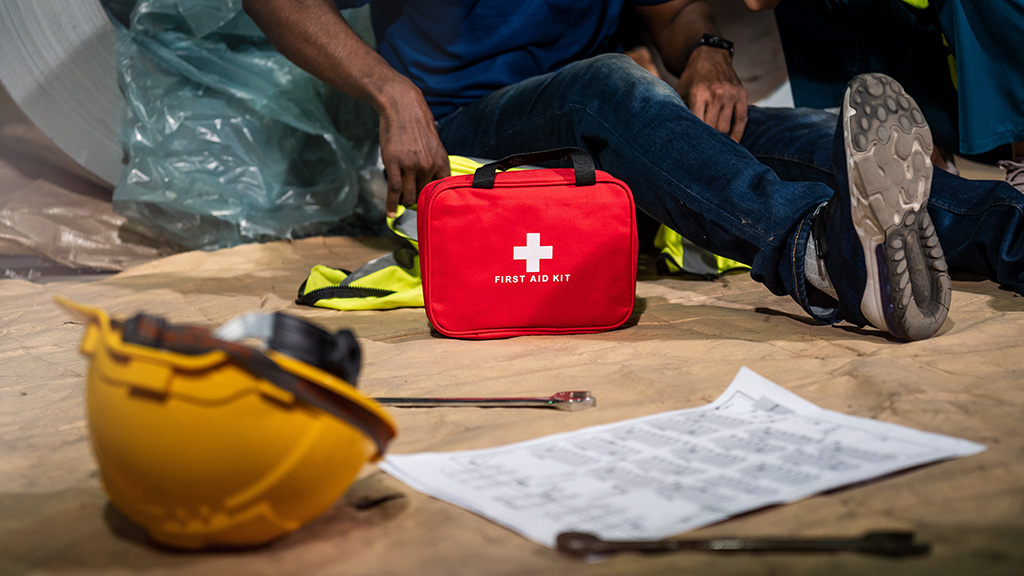On Nov. 1, 2024 changes regarding the provision of occupational first aid (OFA) to B.C.’s Occupational Health and Safety (OHS) Regulation come into effect.
WorkSafeBC says the upcoming changes will affect all B.C. employers who are required to provide first aid services that are appropriate to each workplace.
WorkSafe says all B.C. employers must be prepared for these changes and assess first aid requirements for their workplaces.
The regulations might have a significant impact on some construction employers.
As part of their assessments, WorkSafe says, employers need to consider four potentially important variables:
- The maximum number of workers present at their workplace;
- the distance from their workplace to the nearest BC Emergency Health Services (BCEHS) ambulance station;
- the hazard rating assigned to their workplace (low, moderate or high); and
- whether their workplace and all areas within it are accessible to BCEHS ambulance personnel.
Numbers three and four are especially relevant to the construction industry. Some construction sites are typically classified as high-hazard, which means they could face stricter first aid requirements.
Under the new regulation, employers may need to provide a higher level of first aid services if their workplaces are remote or in “less accessible areas.”
Some examples include underground work; excavations; areas accessible only by ladders, scaffolds or temporary work platforms; high-angle work areas or places with unguarded fall hazards; areas with drowning hazards (work on or over water); and areas requiring specialized PPE or where hazardous atmospheres may exist.
WorkSafe says the purpose of the amendments is two-fold.
It wants to strengthen the current requirements regarding OFA, particularly with respect to certain high-risk remote industries.
It also wishes to harmonize the OHS Regulation regarding first aid training and first aid kits with the updated national standards of the Canadian Standards Association (CSA).
The first aid requirements listed in the OHS Regulation have been in place for almost 20 years with only a few updates.
Since then there have been improvements in first aid training and equipment with which the new regulations need to align.
Angelique Prince, director of prevention programs and services at WorkSafe, says some important definitions regarding first aid have been tweaked or amended.
For example, a workplace is now deemed to be remote if it is 30 minutes from an operational ambulance station that is equipped with a BCEHS crew and vehicle.
Remote used to be defined as being 20 minutes from a hospital.
In addition, under the amended OHS Regulation, employers will need to conduct a two-part assessment to determine their workplace first aid requirements.
First, they must determine the minimum requirements based on the regulations.
Second, in consultation with their workers, they must determine if additional first aid services are required.
Construction sites the regulations deem to be remote or less accessible may need to acquire more equipment and more first aid attendants.
Justin Leisle, director of health, safety, environment and quality at Ventana Construction Corporation in Burnaby, gave feedback to the amendments proposed by WorkSafe at both the public consultation sessions and formal and informal consultations.
Leisle was acting as a representative of the B.C. construction industry.
“Ventana’s first aid attendants will need to upgrade the level of their training,” says Leisle.
Ventana is also currently engaged in upgrading its process and procedures to meet the new regulations and guidelines.
“We’re putting together internal training materials now,” says Leisle. “We’re also working on increasing the frequency and type of first aid drills and preparations.”
The Council of Construction Associations (COCA), which represents B.C.’s construction associations on matters of workplace health and safety, also provided feedback to the proposals.
“We did careful due diligence on the impact of the changes on our members,” says Dr. Dave Baspaly, president of COCA. “The construction associations are hyper-engaged on this. And we’ve appreciated working with WorkSafe staff on the amendments to the regulations.”
Baspaly says WorkSafe needs to communicate clearly to the construction industry, especially the small and medium-size companies, on what’s changed in the regulations and what hasn’t.
“Everyone who is affected needs to have the time to participate in a discussion about the changes,” says Baspaly.
COCA has developed some information on the changes, which is available here.
Some construction company first aid attendants will need to upgrade their training.
WorkSafe has provided a list of training providers.
One of the providers, TraumaTech International Inc., with four locations in the Lower Mainland, has updated its relevant courses to match the amended regulations and will start offering them in September 2024.
TraumaTech spokeswoman Maureen McGowan says the updated course materials align with CSA standards and students who pass the training will receive a certificate of completion.
For those who would like to find our more about the amendments, there is plenty of information:
- Backgrounder: Occupational first aid regulatory changes.
- First aid assessment worksheet
- Changes to occupational first aid requirements: Frequently asked questions
WorkSafeBC will post four informational/instructional videos about the changes on its YouTube site in September











Recent Comments